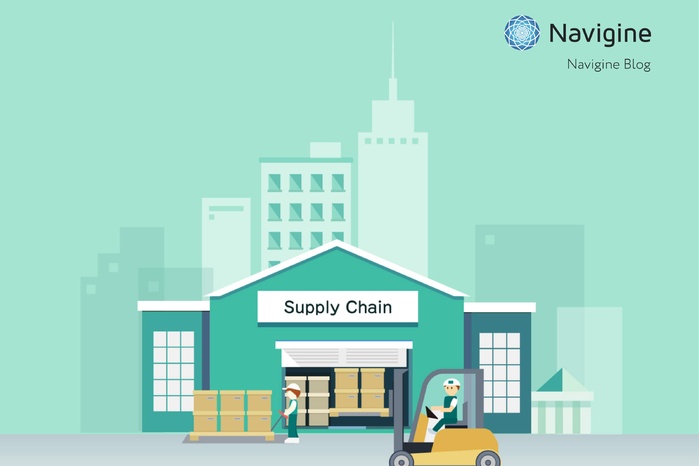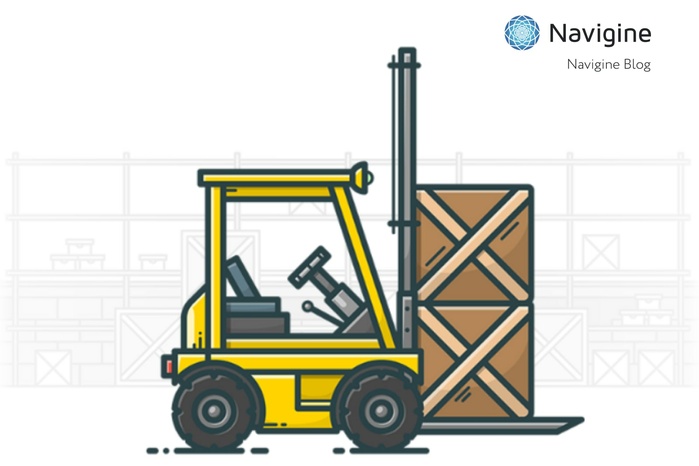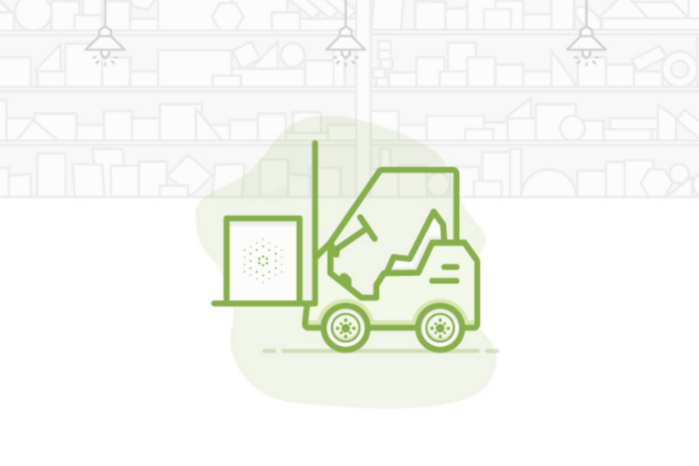Img Source - Zhouqi
Since any warehouse or large logistics center has to track assets, companies can make use of smart solutions based on modern indoor tracking and navigation technologies. Effective asset tracking allows businesses to minimize cargo losses while loading, increase staff efficiency, and lower operational costs.
Asset tracking: What is this?
Asset tracking is the ability to monitor the location of valuable assets and control their movement in real-time. Monitoring is carried out by using a mix of hardware plus software that provide information about the real physical location of tracked objects. The main benefit of implementing asset tracking solutions is the efficiency increase in managing stocks, but in reality, the capabilities of the system extend far beyond those that were mentioned.
The asset tracking technology can also:
- control reception and delivery of goods, equipment, and other assets;
- monitor the terms of maintenance of perishable products;
- define the location of equipment or vehicles which require repairs and maintenance;
- timely detect and inform about emergencies.
While implementing the warehouse tracking system, special sensors or tags are installed in different parts of the warehouse and send out radio frequency impulses. As soon as the asset gets into its range, the data about the object movement is directed to the server where it is processed and sent to a user’s PC or smartphone. According to recent IBM research, a warehouse tracking platform increases labor productivity by 28% and reduces labor costs on repairs and equipment maintenance by 17%. The results of another study carried out in 2019, showed the savings increase from 220,000 to 19,000,000 US dollars on each project connected with asset tracking. Similar projects related to tracking valuable assets allowed large logistics companies to get up to 9 mln US dollars in profit from each initiative.

An example of an asset tracking platform for warehouse
Tracking capabilities for logistic centers and warehouses
An effective warehouse asset tracking software ensures good results in optimizing logistics processes at warehouses. The system helps to monitor objects in real-time, immediately notify about emergencies, and assists supply chain operations.
Tracking assets inside warehouses
The asset tracking solution allows companies to control any assets in a warehouse or logistic center. Moreover, it helps to monitor goods, cargo, equipment, and vehicles. The technology offers users an effective and convenient tool that ensures clear control over each asset. Tracking objects in real-time is only one function out of many. The others include:
- gathering analytics about asset and vehicle traffic;
- warehouse area management optimization;
- reducing costs on transport and staff;
- adjusting employees’ daily tasks;
- a quick search for broken or lost assets;
- building optimal routes for moving equipment.
All the information about object movements is displayed on the map and significantly simplifies the management of warehouse and logistics processes. The use of the system can result in minimizing expenses on logistics and increasing the company’s profit.
Instant notifications about emergencies
By deploying an asset tracking system, companies have fewer problems ensuring the safety of staff, equipment, or valuable items. The system constantly monitors warehouse operations and instantly notifies users about emergencies. The asset tracking technology can:
- send out notifications about fires, accidents, and other emergencies;
- help during evacuation to search for exits from the building;
- build optimal routes for transport and prevent possible collisions or hitting people;
- monitor the flow of employees in restricted zones.
Real-time monitoring significantly optimizes warehouse performance and makes it safer for people, since it is able to timely warn workers about emergencies and helps to reduce accident costs.
Tracking assets in supply chains
At present enterprises are in dire need of transparent asset tracking in supply chains. Since the failures in this process can lead either to empty shelves in stores or to a surplus of products, companies have to monitor the warehouse stocks and control each stage of the supply chain. Asset tracking helps to solve this issue because its implementation allows it to detect the exact location of forklifts and other machinery. Information about vehicle location is crucially important for logistics centers. Remote assets can be lost on the way and their tracking makes it possible to restore goods, save resources, and help to deliver goods to clients on time.
Monitoring can be carried out along the entire route – from the place of departure (ship, car, another warehouse, etc.) to the final destination. According to experts, in the near future, this direction will develop rapidly since there is a growing need for using the JIT (just-in-time) concept.
Navigine and MOKO case on asset tracking inside warehouses
To thoroughly understand how the asset tracking solution works, let’s consider its working principle drawing on the example of the case from Navigine and MOKO. The task was to solve challenges related to warehouse operations, such as difficulties with searching for goods and equipment on a large territory, lack of notifications about emergencies and digital maps of premises, and low employee performance.
Navigine developed an innovative platform that allows obtaining data on object locations and tracking vehicle movements around warehouses in real-time.
The project was realized together with the ‘smart’ equipment supplier MOKOSmart. The system implementation has resulted in:
- creating the digital map that let the staff quickly search for goods and increased the warehouse performance by 20%;
- reducing the warehouse costs in case of an accident;
- getting a tool for comprehensive analytics that helped the management to optimize the warehouse space.
Navigine specializes in developing asset tracking systems and offers its clients effective tools for monitoring goods in warehouses and logistics centers. We develop well-thought-out software products that significantly broaden management capabilities and increase operations transparency. To get additional information about the service, contact Navigine by filling in this form.
FAQ
What are the benefits of implementing the asset tracking system inside warehouses?
Most companies track assets to simplify the process of stock-taking and reduce time searching for lost or stolen items. Missing goods require replenishment and, consequently, additional expenses that could be directed to solving more complicated tasks. Thanks to monitoring, employees can easily find lost items or prevent theft from the territory of the logistics center.
Main benefits of the system:
- cut costs connected with thefts or losing assets;
- minimizing losses from the damage of goods with a limited shelf life;
- reducing time wasted on searching for goods;
- optimizing stock;
- effectively detecting issues in warehouse performance;
- increasing the company's profit.
Which technologies can help with asset tracking implementation?
The asset tracking system can be deployed with various technologies, including:
- Bluetooth® Low Energy – one of the most efficient systems used in many spheres based on installing special beacons that track the location and movement of objects with an accuracy of up to 1 m.
- UWB – the most accurate technology defining the object location with an accuracy of up to 10-30 sm. It is based on transmitting high-frequency impulses and characterized by perfect noise immunity and spectral flexibility but it requires high implementation costs.
- GPS – the global positioning system allowing the localization by using the data from satellites. Since satellite signals have certain problems penetrating walls, the technology is more often used in open areas of warehousing centers.
The choice of the right technology is made by taking into account the goals, tasks, and financial resources of a project. Thus, Bluetooth® Low Energy is suitable for managing logistics at large warehouses, while UWB is a good option for tracking small and expensive things.
While choosing the suitable technology, one should consider such criteria as the number of tracked assets, the general square of the place, the cost of each tracked object, and expenses on deployment and infrastructure maintenance. If necessary, several technologies can be combined to get maximum benefits from each one.
Does warehouse efficiency increase after implementing asset tracking systems inside premises?
Tracking of assets can make a significant contribution to stock optimization and increase general performance. If you need to define the location of goods in the warehouse, track their movement, and support the smooth functioning of supply chains, technology can become an indispensable tool in any company’s operation. According to the statistics, after the implementation, the system considerably saves time and enterprise resources, and reduces the warehouse equipment downtime, on average, by 20%.
Are you interested in a warehouse tracking system? Discuss more in a private free consultation:
You can also learn more about our advanced warehouse asset tracking solution here!



